Cory Huff's Blog: The Abundant Artist Goodreads blog, page 8
May 4, 2021
Don’t make these 3 mistakes when trying to sell your art on Instagram
I coach artists at The Abundant Artist—from artists who are just starting out to artists who are selling $100,000+ a year in art—and one of the things we talk about a lot is how to use Instagram to increase sales of your art.
There are three mistakes I see artists making on Instagram.
Focusing on follower count.Obsessing about hashtags.Working harder, not smarter.Mistake #1 – Focus on follower count
Look, I’m a working artist too and I get it. There’s a little bit of an endorphin rush that we get when our follower counts start going up. That little juice when you cross that next big threshold (whether its 100 or 10,000 followers) can distract you from focusing on what really helps you sell art on Instagram.
Chasing follower count is a whole industry. Just today, I got a message for a service that would help me buy 1,000-100,000 followers just by paying $10-$1000, depending on the number I wanted to get. When I see those kinds of messages, I get mad because I know so many people on Instagram want to grow their numbers to get more sales and that they’ll pay big money to do so—and that’s not even what matters when it comes to selling art on Instagram.
When I get those kinds of offers I think about the business model that’s behind it. Who does this work for? Are those 1,000 new followers going to be buyers or bots? Are they good matches for my art? Are they my ideal client?
I think we all know the answer to that: No, they are none of those things.
What matters most is having real followers, not fake followers—people you know (or get to know) by connecting on Instagram.
I would rather have 1000 followers who know me and my work, comment regularly, who watch my videos, and who share my art with their friends, than 10,000 unengaged followers or bots.
Mistake #2 – Obsessing about hashtags.
It’s important to have good hashtags on your posts, but obsessing over them can take you away from the work that really gets sales on Instagram.
How do you get good hashtags?
1. Have a look at your top collectors’s or ideal clients’ profiles—what hashtags are they following? (Go to their profile, click on Following, and look for the hashtags at the top.)
2. Click and look at the Top 9 for each hashtag—does it look like your art fits in? (I did this with ‘commission art’ and discovered that it was used primarily for custom avatars/illustrations—not a match for my audience/collectors—so I stopped using it and found hashtags that were better matches. You can use an site like flick.tech or an app like Later to help you find good hashtags.
3.Select hashtags that have under 500,000, 100,000, and 20,000 posts, so you are more likely to be seen.
Mistake #3 – Working harder, not smarter.
It’s a tried and true statement—work smarter, not harder. But what does it mean when it comes to selling your art online?
One thing that separates artists who struggle to sell work on Instagram from artists who sell consistently is how they are using the different features on Instagram. Artists who sell consistently use all the different features of Instagram thoughtfully and strategically.
Strategy
The goal of using Instagram is to grow sales—you do this by:
1.Connecting directly with collectors.
2.Driving traffic to your website.
3.Increasing sign ups for your email list.
All three of these goals are the foundations for gain more sales.
How do you use the different features on Instagram to reach these goals?
Instagram is more than your Feed—it’s your Profile, Stories, Highlights, Reels, IGTV, Direct Messages, and Shop Links. Knowing how each feature works, how and when to use them will help you connect with your ideal client.
Feed
This is your most curated space. Think art gallery. Use preview apps like ArtRooms to show collectors how your art would fit in their spac. Learn more on our blog Top Apps for Previewing Art on a Wall.
Bio
Your profile page bio is how people get to know you quickly. Quick brags (aka “award-winning” or “as seen on TV/at XYZ exhibit”) and clear calls to action: visit website, subscribe to my email list. Stay on brand—if your brand is playful, be playful; if your brand is earnest, be earnest; if it’s badass, be badass.
Stories
Stories are where collectors and followers want to see the ‘real you’—this is where you can be a little messy and fun. Think of it as the chaos of the Opening Night at the gallery—people are checking out the clothes, food, drinks, art, talking about what they read, enjoy doing, asking what inspired the art, etc.
Highlights
Showcase past Stories on your profile page in Highlights. It’s another way collectors get to know you.
Direct Message
This is where it gets real. Use direct messaging to reach out to potential ideal clients who like, follow, and comment on your work. Art is a relationship business and relationships are built through conversation, which happens in the DMs. Want to know more about how to use DMs to sell your art? Sign up for The Abundant Artist Instagram Workshop – How to sell your art on Instagram, even if you don’t have 10,000 followers – and in one hour learn how to do this, based on lessons learned by working artists who have sold thousands in art, using a few key steps consistently.
Reels
Right now (Spring 2021), Reels is where it’s at in Instagram. Reels get a BUNCH of traffic as it’s the newest Instagram feature. It works kind of like TikTok—short videos/video clips—it’s a fun, playful place that you can showcase your work, personality, and process (especially with time lapse videos).
– Share your Reels to your Stories to drive more traffic– if it’s polished, share it to your Feed also.
–Reels can be a bit squirrelly to figure out at first and it’s pretty new. Instagram has a great help page that answers a lot of questions.
IGTV
IGTV is where you can share longer videos of you and your art. Remember to use hashtags in your description. You can also cross post an IGTV preview to your Feed and Stories so more people will see it.
Shop Links
Shop links have gotten easier in the last 6-12 months. Setting up your Instagram Shop lets you tag your art so it’s easier for people to purchase your work. It takes some effort (and maybe watching and re-watching help videos) but once it’s set up, it’s easy to use.
–Pro Tip: Here’s a link to the help page about how to set up Facebook and Instagram Shops. Check your website platform to see if their Facebook/Instagram integration has improved in the last 6-12 months (such as with Squarespace).
This may seem like a lot to take on all at once—and it is, so don’t. Work your way through the list and put into action a strategy that focuses on connecting.
If you want to know more or learn how to sell art by connecting with collectors on Instagram, sign up for the one-hour TAA workshop—How to sell your art on Instagram, even if you don’t have 10,000 followers.
Sarah C.B. Guthrie, MFA, is a full-time artist based in Seattle and serves as lead coach for The Abundant Artist. With 20 years experience in marketing and communications, she learned how to take that knowledge and her fledgling art business from a few hundred dollars a year to a full-time income in just a couple of years through applying the lessons in The Abundant Artist courses. She coaches TAA Mastermind Groups, How to Sell Your Art Online 101, 201, and 301, The Foundations of a Thriving Art Practice (with co-coach Jessica Singerman), and assorted Master Coaching Calls and workshops. Her website is https://www.artistgu3.com/.
The post Don’t make these 3 mistakes when trying to sell your art on Instagram appeared first on Online Marketing for Artists.
April 22, 2021
The Ultimate Guide to Building a Studio Practice
For many people, when they think about an artist at work, they envision uninterrupted marathon hours of studio time… something that isn’t realistic for most artists.
A studio practice needs to be sustainable – meaning you can keep it up for many years, whether you have family obligations or other jobs – without burning out. There are obvious necessities for a studio practice – like space and time – but to sustain a practice for a lifetime involves your mindset.
What is mindset? Simply put, mindset is the way you think. You can reframe the way you think to make your thoughts work for you, not against you.
I talk about the artist mindset in two ways: the mindset for your creative practice and the mindset for selling your work. In this post, I dig into how to cultivate an artist mindset to drive your creative practice. How do you prioritize the making part of the equation and keep creative momentum?
With mindset, people often focus on having a positive outlook. Positivity is part of it, but I advocate having a resilient mindset. The resilient artist mindset means being equipped to keep making your work even when you don’t feel like it. Develop the tools to carry you through lulls in your work and to break through blocks. Recognize that life might not be all kittens and roses, and you will have challenging moments. Having resilience lets you know that you can and will work through external and internal obstacles.
I’ve found nine keys to building a resilient artist mindset and sustainable studio practice.
1. Organize your workspace and limit decisions
Whether you have a dedicated studio or make your work on the kitchen table, the concept is the same: organize your workspace so you can get to work and clean up quickly.
For a couple of years when I lived in a particularly small apartment, a small cardboard box held all my materials, and I made my work on our dining room table. Because this was a small table and we used it for meals, I had to put away everything after making my work each day. This created some limits around the size and materials I could use, which was helpful because it forced me to make decisions before starting projects.
I mention limiting decisions because the less thinking you have to do when you start, the easier it is to make your work. So do a little planning: define a project, prepare a bunch of paper, panels, or whatever you’ll need to make your work, pick your medium(s), and commit to working on this particular project for a week or a month, or any length of time you’ll choose to dedicate to it.
2. Make time
One of the most frequently mentioned obstacles to a consistent art practice is being unable to find time. But what sounds like a time problem is often a mindset problem. I realize that with jobs, family, health concerns, and the myriad things that come up in life, you can feel like the universe is conspiring to make it impossible to create. However, the resilient artist mindset recognizes that it’s not about finding time. It’s about making the time. Maybe your other obligations mean you can’t have marathon studio sessions. Instead, I recommend you start by finding a consistent time to carve out 15-30 minutes to make something. First thing in the morning? Lunch time? Late at night? Find whatever works best for you.
Showing up repeatedly and regularly—even for relatively short amounts of time—can help you build a body of work. Make your studio time super concentrated. Arrange your workspace so you can maximize your work time rather than taking time to set up and clean up. Limit your decision-making process by doing a little planning and prep work.
Learning to say no and communicating your priorities with your partner, kids, or roommates will also go a long way in making this a reality.
3. Manage negative self-talk
Experiencing negative self-talk is a normal part of being human and of being an artist. Whether you call them the inner critic, self-doubt, or resistance (as Steven Pressfield refers to it in his book The War of Art), negative thoughts and emotions will crop up. Fear of failure, jealousy, perfectionism, or imposter syndrome can frustrate and even paralyze you as you work.
On the other hand, that internal voice can also challenge us to work harder and to make better work. When you notice negative self-talk or any of these challenging emotions, it’s helpful to acknowledge them before you try to work. To process these thoughts and emotions, I recommend writing morning pages, an exercise in free-form writing from Julia Cameron’s The Artist’s Way. Write three full pages about the negativity or the blocks that come up for you. You can also ask yourself questions and see what answers spring to mind as you write. Negative self-talk tends to come up more when you don’t create regularly. A daily art practice is the best antidote to this.
4. Go pro
I only went pro in my work as an artist after I became a parent. Going pro isn’t necessarily working full time as an artist or making a living as an artist, but rather showing up in the studio and getting to work even when you don’t feel like it. Think like a professional. You work when you’re not inspired, when you’re tired or don’t feel great, and when you don’t have any ideas.
Of course, there can be cognitive dissonance when I recommend getting to work even when you have no ideas or inspiration. Here’s what this looks like in real life: when I don’t have ideas or don’t feel inspired, I draw from life or make little abstract watercolors. This is my default mode between projects, so I don’t think too much. I just get to work. Eventually, other ideas will percolate. Remember: ideas come from making the work. This process often gets easier the more frequently you engage with your work.
Note: This does not mean working yourself to exhaustion or until you burn out. For example, it’s important to recognize the level of fatigue where you need to take a step back and take care of yourself. Although I’m a big proponent of getting to work, sometimes you also need to rest and rejuvenate.
5. Build a habit
Resilience requires an element of discipline, showing up and making time for your practice. There are no hacks and no shortcuts. Thinking of your creative practice as a habit or part of your routine will help build and sustain momentum. Sometimes you have to talk yourself into working, but just like anything else that’s good for us (waking up early to exercise comes to mind), the hardest part is getting started. Committing to those 15-30 minutes is the first step. Ask yourself: do I want to live with or without my creative practice? Check out Twyla Tharp’s The Creative Habit to read how she uses habits to create as a choreographer.
6. Trust the process
As I’ve mentioned, the creative process includes doubts and negative self-talk that pop up and slow you down or even block you sometimes. Your creative process is determined by what you make and how you make it. Having a resilient mindset is accepting these parts of your process and noticing the thoughts and emotions without losing momentum. You will gain more experience as an artist and get more confident, and it will get easier because there’s a certain comfort that comes with experience. Confidence makes it easier to take risks, to be brave and bold, and to accept uncertainty and even chaos in your work. Trusting this process makes it easier to break through mental blocks. Unless you are woodworking or creating in other planning-intensive media, you don’t have to have it all figured out when you begin.
7. A note for those with kids: Reframe your creative practice
I said earlier that I only “went pro” after having a child. One of the things we don’t often hear about having kids is that they can actually be good for our creative practice. Sure, having kids complicates things (to put it lightly), but if you are a parent—especially with very young kids—you can reframe your creative mindset. For me, having a child clarified my thinking. Along with the impression that time was speeding up (a common side effect of having kids and getting older), my priorities became very clear. I became ruthless with any time I had to make my artwork and found that I don’t necessarily get more done when I have more time available. Having a child helped me maximize my work time —however short or interrupted—and be more productive.
8. Have fun! You don’t have to be tortured to make “good” art.
You’re probably familiar with the myths of the starving or tortured artist. Some artists believe they must be unhappy or even suffer for their work to be valid. This is not true. You can be happy and healthy and even have fun (!) while making your artwork. You can enjoy making your work and still make work that matters.
Note: We can experience depression and anxiety and other states of mind that make it difficult or impossible to feel happiness. I’m not referring to that here. I’m talking about believing you must suffer to be taken seriously as an artist. So if you needed permission to have fun, make yourself a permission slip to HAVE FUN IN THE STUDIO. (Or at least don’t take yourself so seriously.)
9. Be flexible.
There will be days (or longer periods of time) when things aren’t going well or you simply don’t have time to make anything. The resilient artist mindset means understanding that this happens. It’s not the end of your practice. Don’t beat yourself up. Be extra kind to yourself and get back on the proverbial horse as soon as you can. Getting back into the swing of things may be tough, and you may have some false starts. This, too, is part of the process. Consider downsizing your practice to make it fit into whatever available time and energy you do have. I’ve made tiny drawings—one a day—when that was all I could muster. Take little steps over and over. I hope these tactics for building a resilient artist mindset help you keep up your studio practice no matter what.
Happy making!
If you’re looking for more help with your creative practice, check out the new course I’m teaching with fellow artist and TAA lead coach Sarah Guthrie. Find all the info here.
Additional Reading:
Creating a Life Worth Living, Carol Lloyd
Living and Sustaining a Creative Life: Essays by 40 Working Artists, Sharon Louden
The Artist as Culture Producer: Living and Sustaining a Creative Life, Sharon Louden
 Jessica Singerman, Artist & Art Coach
Jessica Singerman, Artist & Art CoachINSERT JESSICA’S BIO HERE
Jessica Singerman, MFA: The focus of Jessica’s work as an artist is primarily painting and drawing, with some installation and video projects thrown in on occasion. She is interested in the human experience in the outdoors and specifically in getting more people outside communing with nature.
Jessica has taught college and community art classes since 2002, including drawing fundamentals, figure drawing, painting, design, art history, etc… Teaching is her way of giving back to her community by sharing her knowledge and love of art.
She also coaches artists one-on-one. Her area of expertise is helping artists tune into and build their creative muscle. She is a big proponent of taking small daily steps on the way to making a creative life.
Jessica earned her BA in Studio Art magna cum laude with Highest Honors in 2002 from the College of William & Mary, Virginia, and her Masters of Fine Arts in 2004 from the University of Delaware while on a fellowship. Her watercolors are the subject of a book published in 2017, Little Watercolor Squares, and her award-winning paintings and drawings are exhibited and collected internationally.
In previous lives, Jessica taught yoga and worked as a guide and project manager leading epic bicycle tours all over Europe, Central America, and Australia.
She rides bikes, runs, hikes and practices yoga, and lives in Winston-Salem, North Carolina with her husband and their son.
The post The Ultimate Guide to Building a Studio Practice appeared first on Online Marketing for Artists.
March 10, 2021
Case Study Blog Post – Shelby Leigh Kizer/ TAA Mastermind Group
Shelby Kizer is a young artist who has quickly taken the art scene by storm by developing a financially sustainable art business. After graduating from college in 2018, she found herself reflecting on the same question many other artists ask themselves “How do I turn my passion for art into a thriving business.” Shelby spent several months working jobs outside of her field as she continued to search for guidance on how to grow her business. Within 2 short years, Shelby has transitioned her business from making $0 to $30,000 in profit.
“The first year, I didn’t make any money. My profit was $0. I just broke even.”
After a trial and error year, Shelby decided to read Cory’s book, “How to Sell Your Art Online.” With the new tools, she acquired Shelby began to shift gears in how she managed her business. Trade shows and art fairs became two of her primary sources of income. The other half was website sales and some direct sales over social media. One year after reading How to Sell Your Art Online, Shelby hit $10,000 in profit.!
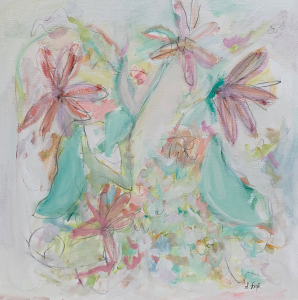 Gerber Daisies II
Gerber Daisies II
The motivation of turning a profit was the driving force behind her continued desire to stay on course on the journey of growing her business.
Like many other artists, at the beginning of 2020, Shelby had big plans on how she was going to continue to scale her business. But, she had to quickly shift gears to adjust to the dramatic economic effects of Covid-19. With a new plan in place, Shelby took to social media and cultivated a new fan base by doing custom scenery pieces. Within two months, Shelby completed 120 small pieces making her around $9,600.
In hopes of continuing to excel in her business during the Covid-19 Pandemic, Shelby joined the TAA Mastermind Group. After receiving the guidance of TAA’s head coach, Sarah Guthrie, Shelby watched her business jump from $10,000 to $30,000 in profit!
“I was working like a crazy woman! Sarah told me I need to increase my prices, so I didn’t burn myself out.”
By receiving the other Mastermind Group members’ continued support and direct guidance from Sarah Guthrie, Shelby ended 2020, completing 7 series and exceeding her sales goal by $10,000.
A few of Shelby’s favorite things about the TAA Mastermind Group are:
The ability to connect with other artists who are working toward similar goals.Assistance with developing solid strategies. Access to a network of industry professionals.Does Shelby Kizer’s story resonate with you? Are you looking to receive hands-on support on how to grow your business? If so, learn more about the TAA Master Mind Group by visiting our website.
The post Case Study Blog Post – Shelby Leigh Kizer/ TAA Mastermind Group appeared first on Online Marketing for Artists.
March 1, 2021
How I Sell My Art: Lisa Kellner
In 2012, I thought my dreams as an artist were being realized. I was having my first solo exhibition at a gallery in Chelsea, NY. My work was selling consistently with my gallery in DC. I had multiple requests to exhibit and exhibitions scheduled a year or so in advance around the country. I was ticking off goals from my list. It was all I had dreamed about when I first went back to art school in 1996 and again when I decided to get my MFA in 2006.
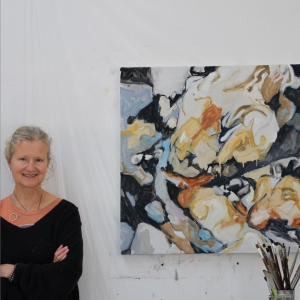 Lisa Kellner
Lisa Kellner
Yet, I wasn’t happy. In fact, I was exhausted, frustrated and felt rather like a hamster on her treadmill. The exhaustion came from saying yes to everything in an attempt to ‘achieve it all’. Frustration stemmed from being pigeon holed by gallery demands and wanting to expand beyond what I was already making. Overall though, I was feeling disconnected from my genuine self and wasn’t quite sure how to get her back.
“The hamster on the treadmill became a recurring euphemism in how I felt about the “art world” I was experiencing.”
And then, I got sick. It started as a virus and quickly traveled to my eyes threatening my eyesight. I was in the middle of three exhibitions and couldn’t see clearly! Something had to give and my body was yelling at me for a change.
So, I took a step back. A giant step. I went from traveling to my studio in New York city every week (I was living in Virginia at the time) to closing up that studio and taking a deep breath. Granted, I had no choice because healing my eyesight was the primary goal in order to be able to make my work. Slowing down drastically had never been an option until now. Suddenly, I was faced with the question that had been looming for several years, why wasn’t I satisfied?
I started to pay attention to my body, meditating daily and doing yoga. I changed my diet completely. And I began to consider what would make me happy as a working artist.
The “art world” of galleries, curators and exhibitions is enticing to artists. In art school, it is the end goal. Having a gallery represent your work and build your collector base is the dream for most artists. But it does not come without conditions that the artist must comply to. And if it isn’t in your nature to do so, then you are going to feel confined by it.
One day I met a friend of mine for coffee, who was a successful NYC artist and my mentor. She sat me down and said, “Lisa, everything I have achieved, the museum shows, the commissions, the grants and opportunities came from my own efforts – not the gallery I work with.”
I was stunned. I thought, like most artists do, that once you have a gallery representing your work, they take over the promotional aspect of your career building your collector base and exhibition opportunities. This new information was the missing link propelling me to free myself – finally! – from my previous mindset, and envision a future of what I truly wanted for my work.
“If I was going to have to continue to put in the amount of effort that I had been and more, then I might as well do it completely on my own terms.”
Truthfully, I was tired of dealing with some gallery owners who were disorganized or did not pay on time. My tolerance level for art world professionals who were not professional at all had reached its limit. I’m a bit type A and not having everything in writing drove me crazy. While I still exhibited my work in the traditional manner (and still do!) I started to look at other options outside the established art world.
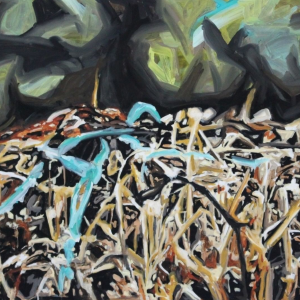 Strung Out, Roped In
Strung Out, Roped In
I closed the door on individuals who I no longer wanted to deal with and kept my professional circle tight. I started saying “no” to opportunities that didn’t excite me. I reached out to new people that I admired and began some genuine relationships that continue today. And I started to explore new ways of making art that I had been suppressing, simply because what I was already doing was in demand.
At the same time I moved to a small island off the coast of Maine. This move, to a place surrounded by nature, was the impetus to start fresh and live a more grounded life on my own terms. Running to a studio in New York (a nine hour drive away) or having curators visit
my studio became a real challenge. I began to consider the possibilities of the internet, not only to sell my work but to present it in a way that felt cohesive. This included virtual studio visits, a YouTube channel, online exhibitions and yes, selling my work online.
I already knew what it felt like to come from a desperate place or to get involved with an opportunity that didn’t feel quite right. Suddenly I became hyper aware when something did not correlate with my art and my studio practice, deciding to only work on projects that did.
” It felt freeing to honor this empowered perspective.”
What I noticed was that many of my artist friends back in NY were still operating under the old premise of the gallery is god, you should be grateful and never deviate from the work that the gallery wants.
I was seeing, perhaps for the first time, how outdated the current gallery model was and how many galleries were truly struggling. Years before 2020, I discovered that it was standard practice for certain galleries to generate revenue from either artist submission fees or personal benefactors instead of from the sales of the artwork.
This was not a viable business model that I wanted to participate in. Exhibiting institutions that had a budget to show art without the artist incurring further expense became my focus. If I was going to work with a gallery or curator, I wanted to make sure their mission was to support the artwork fully without compromising the artist. I let go of any gallery or exhibition space that did not align with my new outlook and held onto the ones that did.
Then, I did three things. First I completely revised my website so that I could offer art for sale directly on my own site. Then, I started to collect email addresses and wrote a monthly newsletter. Finally, I took my newfound outlook and started researching opportunities online.
Admittedly, at first, they were few and far between. Not all internet art platforms are equal!
I researched curated platforms and signed up for their email list. And then I watched to see how they ran their businesses. When I was ready, I applied to my first one, only giving them some small works on paper to sell.
“A few months later I had my first online sale. I was excited; thrilled in fact.“
When I sold work with a gallery, the gallery kept the collector’s information, plus 50% of the proceeds. Now, I was dealing directly with my collectors, building up a repore while also getting some very nice feedback.
Other than making my work, connecting directly with collectors is one of the most gratifying experiences I have had! I was hooked.
When Covid hit, I was already selling online with several platforms that I respect as well as from my own website. Consequently, I didn’t feel much of a change in 2020. In fact, when people were still in lockdown several months in, I saw a bit of a boom in my sales. Today, I
have expanded my online platforms and have also started some very satisfying collaborations.
My initial observations that the traditional gallery model was outdated was proving to be true. The events of 2020 have forced many artists and galleries to re-envision the way they present and sell art. While there will always be a need to see art in person, the internet has become the primary resource for discovering and buying art. Whether you like it or not, this is not going away anytime soon.
It took a few years but I can finally say that I have created a business model for my art that is based on integrity, genuine connections and complete satisfaction. I will never go back to showing my work, either online or in person, in a way that compromises that integrity or puts me back on the hamster wheel.
Art is a means of freely expressing your unique creative abilities. Why can’t the business side of your art practice be as well?
Here is my advice for selling art online:
Be patient. It takes time to build your reputation online and in person! Trust the process. Art is meant to be experienced in person. If you decide to sell your work online, make sure you are finding ways for real people to see it in real life. The added benefit of this are the great installation shots you will share with your audience. Photograph your work well. Hire a professional if you can’t do it yourself. 4. Research online platforms before you place your work on them. Go for the curated online platform versus the ‘anyone can join’ platform. 6. Never compromise your integrity. It’s all you have. Understand the value of working with a gallery or online platform that respects the artist first and foremost.. Build relationships with curators, gallery owners, collectors and peers. Nurture those relationships. Build your own website’s reputation, not your social media platform – which you don’t own and can be changed by an algorithm at any time. There are multiple art worlds. Choose the ones that best fit you and your work! 11. Never let a gallery or dealer tell you what to make. If one type of art is selling well but you have a need to try new things, honor that need and make the art that is true to you. You are solely responsible for the outcome of your efforts. Decide that your workThere are multiple art worlds. Choose the ones that best fit you and your work!11. Never let a gallery or dealer tell you what to make. If one type of art is selling well but you have a need to try new things, honor that need and make the art that is true to you.You are solely responsible for the outcome of your efforts. Decide that your work.is important enough for you to dedicate sufficient time promoting it.Lisa Kellner is a visual artist who makes paintings, drawings, and installations. She has exhibited and sold her work nationally and internationally. She currently lives on a small island off the coast of Maine, submerged in nature. You can find her art at www.lisakellner.com.
The post How I Sell My Art: Lisa Kellner appeared first on Online Marketing for Artists.
February 15, 2021
Case Study: Will Eskridge, The Animal Artist for Outcasts
Will Eskridge is an innovative artist who has transformed his career from making just $1,000 in two months to booking $10,00 in 1 month. Over the years, Will has consistently desired to mold his talent into a full-time art career. But, after finishing his formal education, he found himself at a crossroads. He realized that he had all of the tools required to create but little understanding of how to jump-start his art business.
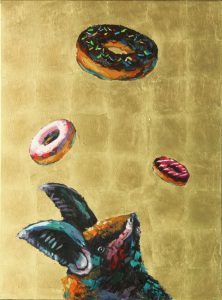 Take a Chance (While You Still Got the Choice)
Take a Chance (While You Still Got the Choice)“I knew I had the talent and passion; I didn’t know how to turn my art practice into a viable business. I was doing okay, but I wasn’t thriving.”
After several months of trial and error, Will decided to jump headfirst into educating himself on the arts’ business! Not long after making this decision did he found The Abundant Artist!
Initially, Will started by taking some of our virtual workshops, How to Sell Your Art Online Courses, and reading the book “How to Sell Your Art Online” by our founder, Cory Huff. As he began to apply the knowledge from the book and the “How to Sell Your Art Online 101 Course”, he began to see his art business generate revenue but felt guided step by step assistance was what he needed to scale to the next level.
After receiving advice from painter Adam Hall, Will decided to join The Abundant Artist Mastermind Group. Will said, “Speaking with Sarah and joining the group was like a ray of gold came over me. Before joining, I hadn’t sold anything in about 3 months.”
With the guidance TAA’s head coach, Sarah Guthrie, Will was able to transform his business. By implementing the tools he acquired in the group his business skyrocketed. Will quickly transitioned from 0 buyers to turning clients away because of an overwhelming number of inquiries.
“The first time I got on the theabundantartist.com in 2012, my life changed; it actually makes me quite emotional when I think about how much my life has shifted since becoming a Mastermind Group member.”
By applying the methods taught in the Mastermind group Will continued to scale his business during the 2020 Covid-19 pandemic. By clarifying how he connected with his target audience, he managed to walk into 2021 with 50 new buyers and 5 old collectors.
Now that Will has established his fine art business, he has branded himself by painting some of the most overlooked animals. Because of this, he has coined himself as the “Rock n Roll Animal Artist for Outcasts”. One of his most well-known works is “Take a Chance,” which shows an adorable bat with donuts.
Will shared with us some of the tools he has implemented to continue to scale and expand his business:
Send out weekly newsletters.Focus on being more strategic on social media by utilizing analytics tools such as Planoly.Implementing productivity methodologies such as ones found in the book The 12 Week Year.Getting organized by using the Panda Planner.If Will Eskridge‘s story resonates with you, then apply to participate in The Abundant Artist Mastermind Group to join a community of artists who are receiving hands-on support during the pursuit of creating a thriving art business.
The post Case Study: Will Eskridge, The Animal Artist for Outcasts appeared first on Online Marketing for Artists.
August 25, 2020
We’re hiring a Marketing Coordinator
Hey TAA readers, we’re hiring!
We are looking for a skilled marketing professional to help us grow in new areas. This is a great remote gig for an experienced professional looking for part-time work or an energetic early career marketer who hasn’t narrowed their career focus to a single specialty yet.
You’ll be working directly with the founder as his marketing right hand, implementing marketing campaigns, communicating with our audience, and coordinating promotional activities with affiliates and partners.
Ideally, you have excellent writing, strong organizational skills, and a true eye for detail. If you have a love for fine art, that’s a big bonus.
TAA is an anti-racist business. Women & BIPOC are encouraged to apply.
Duties
Write & update website content including affiliate product descriptions, course outlines, and occasional blog posts. This also includes making changes to website pages and blog posts to keep content fresh, links and images working, as well as backlinking to new content from older pages.
Manage organic social media channels including Instagram, Facebook, and Pinterest with responsibility for growth and revenue numbers.
Put the weekly emails our founder writes into ConvertKit and schedule for sending.
Assist with course launch activities, including website updates, email updates, and communication with affiliates and students.
Create monthly performance reports for website traffic, advertising, and social media performance.
Research projects as assigned for content creation purposes.
Skills required:
You should be an excellent writer. Clear, concise, and compelling. We’re not looking for a direct response copywriter, but you should know how to write well.
Proficient with Gsuite, WordPress CMS (user, not developer) are a must.
Savvy with social media channels in a professional capacity, especially Facebook, Instagram, and Pinterest.
Basic email sending in ConvertKit email or similar platforms are a must. Big bonus if you know how to program sequences or nurture campaigns.
Basic proficiency with Canva, Photoshop, or similar.
In your cover letter, tell us about your favorite artist. Feel free to pick someone obscure, and share your enthusiasm in your writing.
To apply, email cory@theabundantartist.com with the subject line “TAA Marketing Role” and include your resume and a cover letter.
In your cover letter, let us know why you want to work at TAA. This is a PART-TIME (20 hours per week) REMOTE role, but we’re not looking for someone who is just filling time. Pay is $15-20/hour, depending on experience. Benefits are not included. We are a small, enthusiastic, dynamic team of people passionate about making the world a better place for artists and are looking for an engaged colleague to join our team.
The post We’re hiring a Marketing Coordinator appeared first on Online Marketing for Artists.
June 18, 2020
TAA Artists Elevate Their Favorite Artists of Color
On Monday, June 1, TAA Artist Margaret Sloan made the following post in the private Abundant Artist Mastermind group on Facebook:
“Artists should support artists. During this time of unrest, I’d love it is the members of this group would support black and brown artists by introducing their work to those of us who might not know about them.”
We’ve rounded up the posts here in no particular order. Check out these amazing artists and their work!
Support Black Art Futures Fund
TAA sponsors and financially supports the Black Art Futures Fund. If you would like to support them, you can learn more and donate at Blackartfutures.org.
Cynthia Brannvall
Website: http://cynthiabrannvall.com/
Social Media: https://www.facebook.com/pg/Cynthia-Brannvall-172512729557321
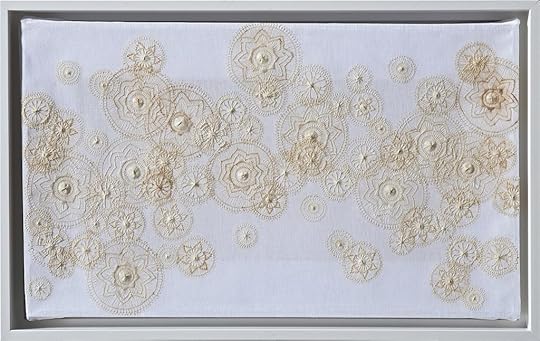 Rhizome, 2015, Cynthia Brannvall
Rhizome, 2015, Cynthia Brannvall
Kara Walker
Website: h ttps://karawalkerstudio.com
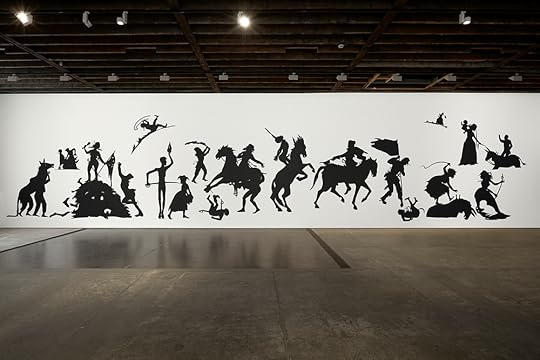 From Go To Hell or Atlanta, Whichever Comes First (exhibition), Victoria Miro, London, 2015 by Kara Walker
From Go To Hell or Atlanta, Whichever Comes First (exhibition), Victoria Miro, London, 2015 by Kara Walker
Richard Mayhew
Website: http://www.artnet.com/artists/richard-mayhew/
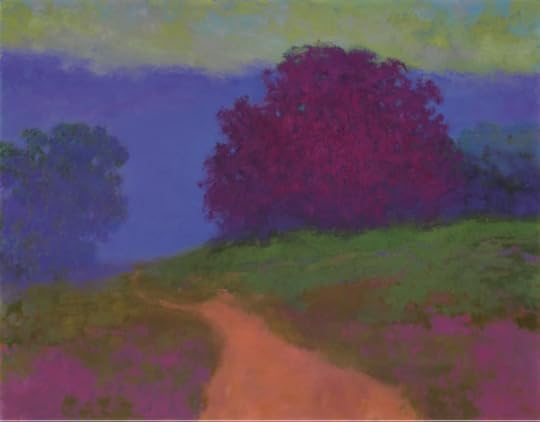 Departure, 2006, Richard Mayhew
Departure, 2006, Richard Mayhew
Kehinde Wiley
Website: http://kehindewiley.com
Social Media: https://www.facebook.com/Kehinde-Wiley-307525552594119/
 The Herring Net (Zakary Antoine and Samedy Pierre Louisson), 2017, by Kehinde Wiley
The Herring Net (Zakary Antoine and Samedy Pierre Louisson), 2017, by Kehinde Wiley
Amy Sherald
Website: http://www.amysherald.com/
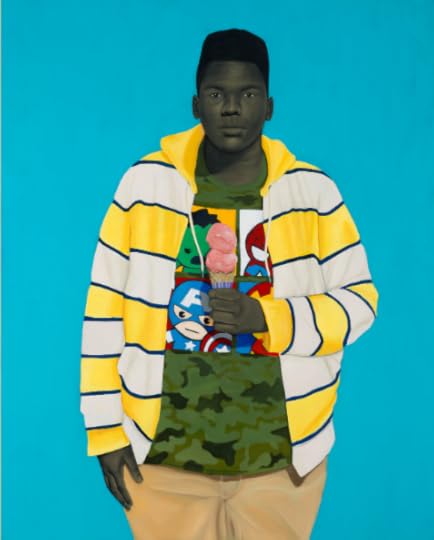 Innocent You, Innocent Me, 2016, by Amy Sherald
Innocent You, Innocent Me, 2016, by Amy Sherald
Mickalene Thomas
Website: http://mickalenethomas.com
Social Media: facebook.com/Mickalene-Thomas-197658856943905/
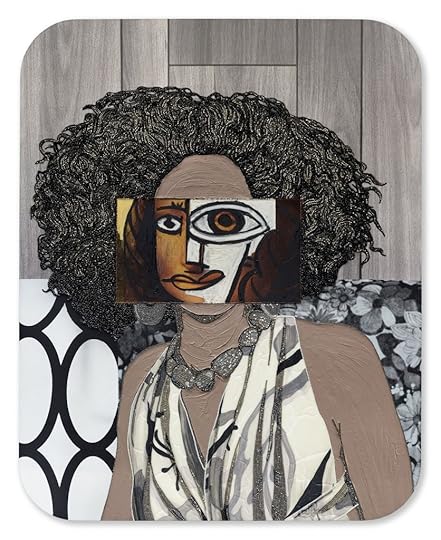 Portrait of Kalena, Mickalene Thomas
Portrait of Kalena, Mickalene Thomas
Calida Garcia Rawles
Website: https://www.calidagarciarawles.com/
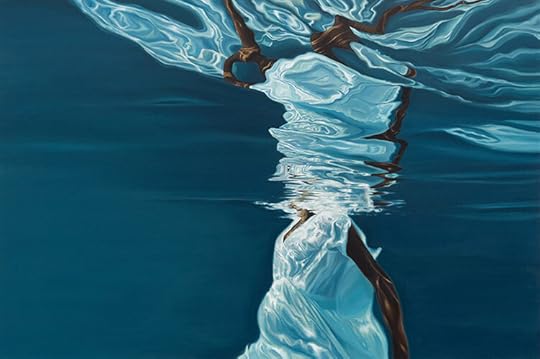 Infinite From Root to Tip, 2020, Calida Garcia Rawles
Infinite From Root to Tip, 2020, Calida Garcia Rawles
Cyra the Artist
Website: https://cyratheartist.com/
Social: https://www.facebook.com/cyratheartist/
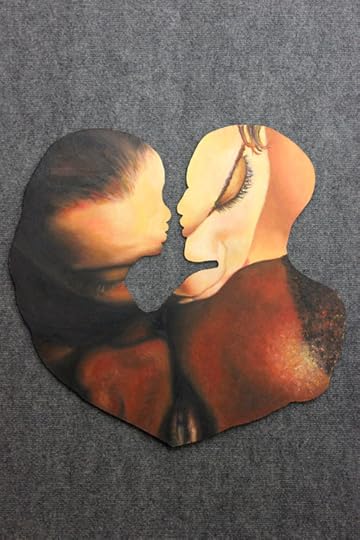 Galactic Rapture, Panel 2 of Tryptic, Cyra the Artist
Galactic Rapture, Panel 2 of Tryptic, Cyra the Artist
Le’Ana Asher
Website: http://www.leanaasher.com
Social: https://www.facebook.com/leanaasherart/
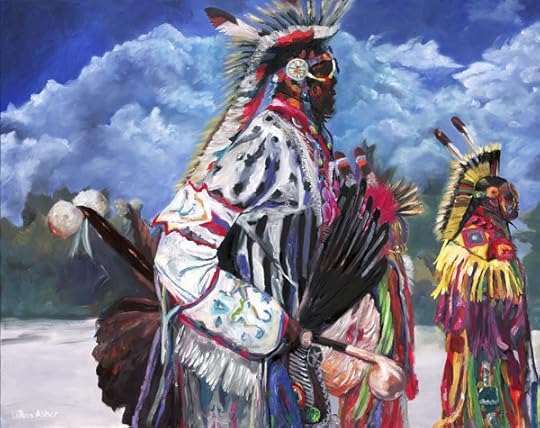 Little Spirit Moon Dancer, Le’Ana Asher
Little Spirit Moon Dancer, Le’Ana Asher
Esmaa Mohamoud
Website: https://esmaamohamoud.com
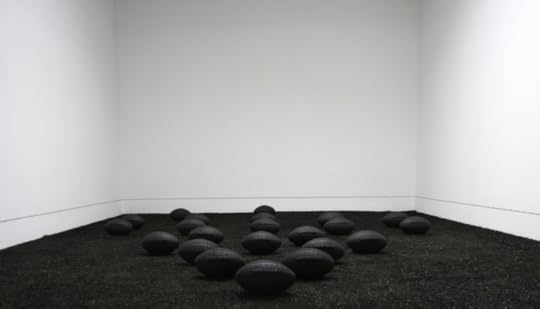 Blood and Tears Instead of Milk and Honey, 2018, Esmaa Mohamoud
Blood and Tears Instead of Milk and Honey, 2018, Esmaa Mohamoud
Gordon Shadrach
Website: https://www.gordonshadrach.com/
Social: https://www.instagram.com/gordon_shadrach/
Chantal Gibson
Website: https://chantalgibson.com/
Social: https://www.instagram.com/chantalgibsonartist/
 Souvenir, 2017, Chantal Gibson
Souvenir, 2017, Chantal Gibson
Sandra Brewster
Website: http://sandrabrewster.com
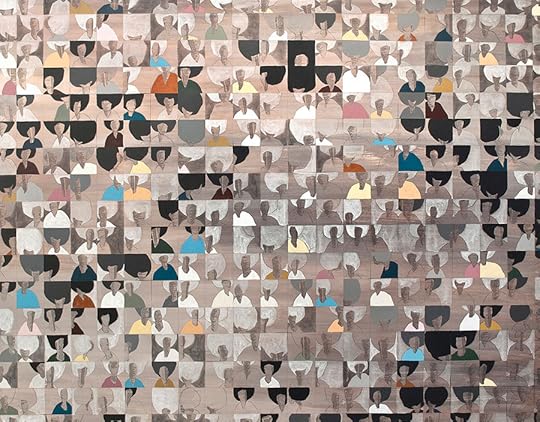 Untitled (Smiths), 2011, Sandra Brewster
Untitled (Smiths), 2011, Sandra Brewster
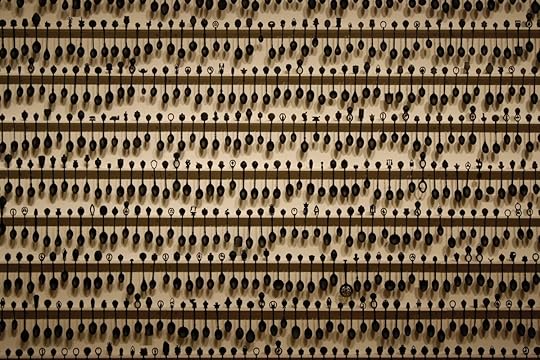
The post TAA Artists Elevate Their Favorite Artists of Color appeared first on Online Marketing for Artists.
June 10, 2020
How to Use a Certificate of Authenticity for Your Art Business
There’s no magic bullet for creating raving fans and booming business. To “make it” as an artist you’ll need an imprecise combination of good work, good marketing, and a whole lot of time and patience. Tools like a certificate of authenticity, fancy website widgets, or an Instagram flash sale are just that: helpful tools. They aren’t magic. But they can make a difference (with time and consistency) in the way that your collectors perceive your work, which can lead to an improvement in sales.
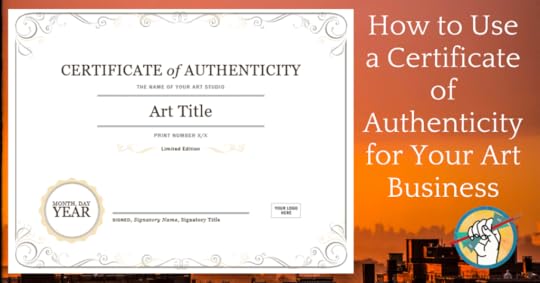
With that disclaimer out of the way, what is a certificate of authenticity, and how should you use one for your art business?
What is a certificate of authenticity?
If you’ve ever purchased a print from a gallery or private collection, you may have received a certificate of authenticity, perhaps with some kind of a foil seal and the signature of the artist or the printer. Such a document is intended to testify to the authenticity of the purchased print. That is, it’s not a fake.
COAs, as we’ll refer to them from now on, also provide important information about the print, the series, the original piece, etc. According to the document Expanding Art Markets: Prints, Certificates of Authenticity, and Art Licensing by Brooke Oiver, Esq., “Certificates of authenticity inform the art buyer about the artist’s identity, the extent of the artist’s involvement in creating the print, the number of prints made from the same master that are available on the market, the process used to create the print, whether the print is from a limited edition, whether the master plate has been destroyed, and other information relevant to the consumer making an informed choice about the value and price of the print s/he is buying. Several states have passed consumer protection statutes that require art dealers to provide certificates of authenticity along with any sale of a fine art print in and even into their state.”
The reason why COAs must be taken seriously by the professional artist is that the market is flooded with fraudulent prints and unauthorized copies, and any schmuck with a printer can produce an official-looking certificate. A “real” COA that actually means something will give detailed and relevant information about the artist, the print run, the status of the original piece, etc, and the certificate is meant to help the buyer assess the current and future value of the print in question.
 This example is a free Word template that has been reworded
This example is a free Word template that has been reworded
According to ArtBusiness.com, “Unless a certificate of authenticity originates from and is signed by either the artist who created the art, the publisher of the art (in the case of limited editions), a confirmed established dealer or agent of the artist (not a casual third party dealer or reseller), or an acknowledged expert on the artist, that certificate is likely to be pretty much meaningless.”
Good reasons to use a certificate of authenticity
They may help reduce fraud: While the average working artist is unlikely to be a victim of fraud, it is a possibility. So one of the primary purposes of the COA is to provide some measure of protection for the buyer: if they don’t receive the original COA, they can know that it’s not an authentic print. A certificate of authenticity won’t stop someone from copying your work (read up on copyright law for artists for other ways you can protect yourself), but using them consistently may help protect the integrity of your business and reputation and maintain the high value of your work.
They tap into consumer psychology: Not dissimilar from running a “limited time only” sale, a certificate of authenticity taps into the psyche of the buyer, reassuring them that this is the “real deal” and that with a legal document attached, it must be more valuable than a print sold without a COA. If you work in a medium or style that is easy to copy or that is already well saturated, a COA can help set you apart. COAs also tend to be associated with “fine” art and are likely to be viewed as items with higher prestige.
How to create a certificate of authenticity
The “problem” with COAs is that there is not one standardized and universally-accepted way to create one. You can utilize an organization like Genuine COA that offers a third-party witness with a unique serial number if you like the official look, but keep in mind that they aren’t more legally “official” than anything else. They can, however, increase value and trust in a customer’s eyes. Third party organizations are often focused on autographed memorabilia and collectibles versus contemporary fine art.
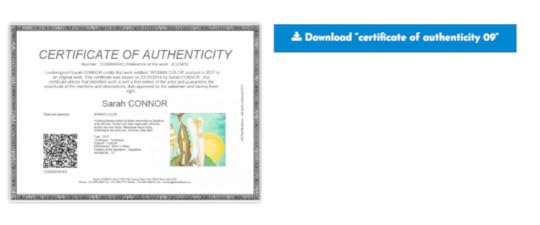 This and 36 other certificates of authenticity can be downloaded from PrintableTemplates.com
This and 36 other certificates of authenticity can be downloaded from PrintableTemplates.com
If you want to include COAs as part of your business model, you can print them yourself on any home printer. The important thing is to remember to include all the applicable information outlined above:
The artist’s identity
The extent of the artist’s involvement in creating the print
The number of prints made from the same master that are available on the market.
The process used to create the print
Whether the print is from a limited edition
Whether the master plate has been destroyed
A quick Google search will turn up dozens of free templates for creating an official-looking document. If you have your art prints done at a local shop or otherwise in a manner that involves a third party, having them sign the certificate as well will increase the trust factor.
Ultimately, a certificate of authenticity is a tool that some artists swear by, and others will avoid touching with a 6-foot pole. It comes down to personal preference and one’s overall philosophy of business. The same logic that applies to tools like COAs also applies to social media platforms and other business tools: the “best” option is simply the one that you will use consistently.
Are you using certificates of authenticity in your art business? Let us know in the comments.
The post How to Use a Certificate of Authenticity for Your Art Business appeared first on Online Marketing for Artists.
May 29, 2020
How to Write an Awesome Artist Bio
What is your identity as an artist? What do you stand for? What are the high and low points of the journey that brought you here? Being able to answer these questions will put you well on your way to crafting an effective artist bio for your website.
An artist bio can be an incredibly powerful tool that significantly increases your chances of selling your art to website visitors and creating lifelong fans. Or, it can be a yawnfest that leads to a quick click of the exit button. How can you tell which better describes your artist bio right now, and how can you make it better?
What is an Artist Bio?
An artist bio is a specialized section on your website that is meant to explain who you are and what you’re about. Your artist bio is your About page.
The best part of an artist bio is that you can personalize it to reflect your brand and your voice. An artist bio may briefly explain the most important highlights of:
-How you began creating art (standout childhood art stories are always well-received)
-Your art education history
-Your best and brightest exhibitions, media mentions and collaborations
-How you began working in your current style
-What is unique about you and your work
-The main messages or themes of your work
For example, if you work in found objects/recycled materials like Dorothea LeBlanc or you created an entirely new painting technique like Sara O’Connor, that should feature on your artist bio. However, an artist bio is not the place to wax poetic about your techniques or the message you have to tell the world. Think of an artist bio as an extended elevator pitch: you’ve got a few extra floors to cover, so you can give a decent overview of who you are and what you’re about. Your artist bio is the place to explain who you are, where you’ve come from, and where you’re going. And don’t forget to include lots of images!
What an Artist Bio is NOT
An artist bio is not an artist statement. While it can be tempting to use your artist bio to expound on the philosophical underpinnings of your specific style of acrylic painting or get deeply into the spiritual side of your art practice, an artist bio is not the place for it. Your devoted audience will love to hear about the deep “why” behind your art, but your artist blog and social media channels are the best places for those stories. You can also have a separate page on your website for your “artist statement” that goes more in depth. Use your bio to instead explain about who you are, how you came to create art and the best highlights of your journey so far.
And although you should include the best career/educational highlights in your bio, your artist bio is not your curriculum vitae (CV). Potential clients and customers do not need to see an exhaustive list of every gallery your work has shown in and every school where you’ve studied. An exception may be including it at the very bottom of the page, or as a PDF download.
An artist bio is not a sales page. Each piece of art listed for sale on your website should have unique copy dedicated to selling the individual piece… but your artist bio is not the place for selling your work. Rather, consider your artist bio as contributing to the overall mission of your website: to create raving fans who will buy your work, share your work, follow you on social media, and commission you. Your artist bio is the place to sell yourself by painting an appealing and intriguing picture of who you are and what you do in such a way that readers can’t help but linger, click links, watch videos, and be inspired to peruse the work you have for sale. All of the artists we feature below do an excellent job of this, so be sure to click through and explore their bios.
How to write an awesome artist bio
An excellent artist bio that actually helps you endear yourself to collectors and sell more art is so much more than simply plugging info into a template. So while we can’t tell you exactly how to write the best artist bio for your business, we can show you some examples of what really works well for other artists. First consider the key elements to include and exclude:
Key elements to include:
Professional experience
Exhibition highlights
Award highlights
General career highlights
Elevator pitch of your work
A brief story of your trajectory toward pro artist
A photo or two of yourself working in your studio
Pitfalls to avoid:
Bloviating
Technical artspeak
Listing every single exhibition and award for the length of your career
Over-selling
Not including any images of yourself or your work
Examples of great artist bios:
Gwenn has crafted a robust artist bio that functions as a sales page for Gwenn Seemel, the artist. It includes a helpful “Who, What, Where, When, How” rundown at the very top of the page, followed by sections that expound on each with abundant videos and images sprinkled throughout. Her bio is written conversationally and is packed with links to blog posts, vlogs, and outside publications. Seemel also, wisely, includes favorable quotes about herself and her work from other publications and media appearances.
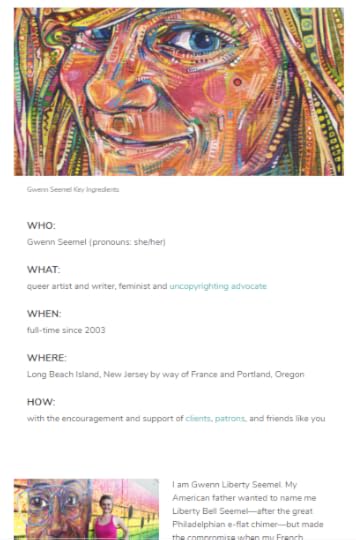
Kelly Rae Roberts has crafted a powerfully strong brand built around her story of transitioning from a social worker to a full-time artist. Steeped in aphorisms on living your truth and loving yourself and crafted in bright sunshiney hues, Roberts’ entire website is intended to communicate a positive and inclusive outlook on art. Roberts tells her story in brief in her artist bio as well as sharing tidbits about her family life. Her bio page includes a random fact generator that shares, with the click of a button titled “click here for another slumber party secret”, a fun fact about Kelly Rae. Kelly Rae Roberts’ website in general is an excellent case study for artists looking for inspiration to draw their website and brand together cohesively in both philosophy and design, and her bio page is no exception. Keep in mind that Roberts’ business is very successful, and an early career artist may not be able to invest in a copywriter and/or website designer in the same way.
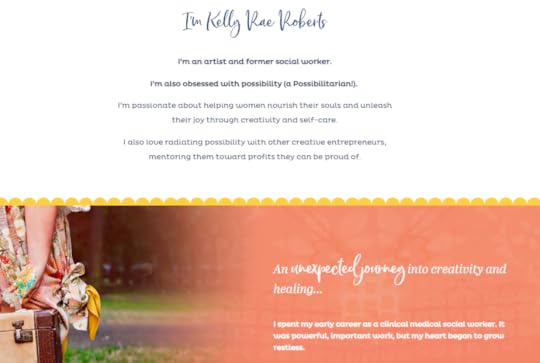
Emily Jeffords uses the “above the fold” section of her bio page to give her elevator pitch, a photo of herself, and a fun section of artist trivia similar to Kelly Rae Roberts’ “slumber party secrets”. Scroll down and she provides a year-by-year history of her career as an artist from fresh out of art school optimism to financial setbacks and paradigm shifts.
The artist bio is more than a simple one-paragraph about page: it has the potential to enchant your website visitors and make them fall in love with who you are as an artist and a human being, which will greatly increase the chances that they will buy from you. A well-written artist bio will be written in a conversational or narrative style that is consistent with the copy across the rest of your website and social media presence.
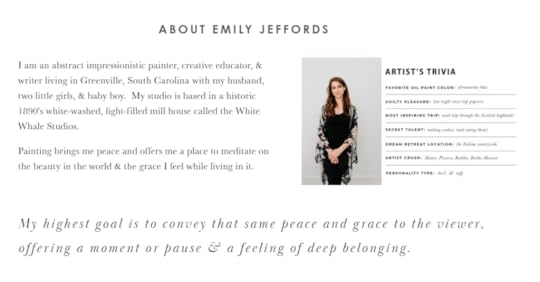
If you’re struggling to identify what makes you unique or to write down your story coherently, How to Sell Your Art 101 is the perfect place to start. Along with a cohort of like-minded artists you’ll proceed through a step-by-step process to identify and write down your story in a way that will greatly improve your chances of selling your art. Read more about How to Sell Your Art 101 here: https://theabundantartist.com/htsyao101/
The post How to Write an Awesome Artist Bio appeared first on Online Marketing for Artists.
May 26, 2020
The 3 Best Passive Income Ideas for Artists
Setting up a passive income stream like print-on-demand products can be a lucrative choice for artists and other creatives. It’s important to remember from the outset that a creative passive income stream can take quite some time to establish. However, the idea behind passive income is always the same: hard work pays off with continual revenue, making you money even while you sleep.
This is a short list of the best ways to bring in passive income for artists and other creative types. It can be especially helpful for artists and craftspeople whose primary work is very time-consuming, who may go long periods between new projects. Use this list as a starting point to inspire you to get creative and find new ways to bring in passive income.
1. Sell tutorial video downloads.
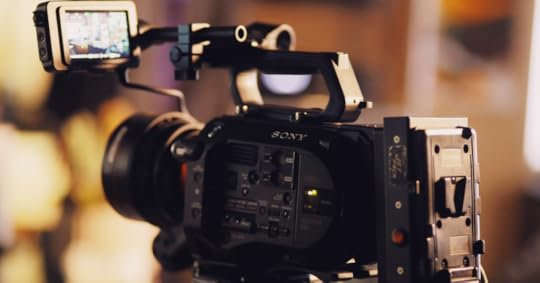
Even if you’re not a pro artist, do you have a creative hobby, or perhaps an artistic side hustle already? Hundreds, if not thousands, of creative people are successfully selling their “secrets” online by creating and selling tutorial videos. Use YouTube, Pinterest, and Instagram to share shorter tutorials and sneak peeks. This will generate interest in your work, after which you can point fans to your website to buy access to your tutorials.
What kind of creative tutorial videos should I make?
Did your 4th grade teacher ever assign a paper that required you to give step-by-step instructions for a simple task like baking cookies? If you can complete that assignment, you have all the basic building blocks you need to create a video tutorial. You do not have to be an expert at the top of your field to create a compelling tutorial that others want to buy. If you can perform your task in a step-by-step manner with clear captions or narration, you can create a video tutorial. An experienced fine artist may choose to break down their work into individual techniques like color mixing or shading, or they may choose to do a full-length video that covers the creation of a piece of art from start to finish. Both styles are well-received.
Whatever it is you want to create a video about, be sure that you highlight whatever aspect of your work is unique. Do you have an unconventional technique, do you use unique materials or do you have an original subject? Pinpointing your niche (and making use of relevant keywords) will help you to stand out from the crowd.
Here are a few ideas for creative instructional videos:
Crocheting, knitting, embroidery
Fluid artwork
Resin casting/pouring
Figure drawing
Watercolor painting
Woodworking
Jewelry making/beadwork
Sculpting/pottery
Creative lettering
Scrapbooking
Furniture restoration
Upcycling projects
Cooking/baking
Candy making
Cake decorating
Quilting
Where Do I Sell Tutorial Videos?
The primary platform on which you sell your products should always be your own website. This is for a few reasons: it allows you the most control over your branding, it allows you to make the highest possible profit, and it allows you to retain the most customer information. If you want to set it and forget it on a third party platform without a bunch of extra marketing, Skillshare, Udemy and similar teaching platforms are another great avenue to sell instructional videos. These should always be in addition to your own website. But unless you’re directing traffic that direction from places like Pinterest, Instagram, and YouTube, expect the traffic to be slow and sales to be sporadic for quite some time.
How Do I Make A Tutorial Video?
Thanks to the high quality of the average smartphone, you don’t need fancy equipment to create a nice tutorial video. A smartphone tripod and some basic editing software will get you started. The most important factor for a video that people will want to buy, aside from a subject they’re interested in, is good lighting and a visually attractive setup. You can be the world’s greatest painter and teach a genius-level course, but if the lighting is bad or the audio is hard to understand you’ll have a hard time making sales. Putting together an accompanying PDF with materials, step by step instructions, and links to other resources is also a best practice and a great way to increase the value of your product.
2. Self-publish Tutorials or Art Books

If you’d rather not spend hours editing raw video, you can compile your techniques and knowledge into an eBook and sell it through your website. You can also sell on online eBook selling platforms like Amazon Kindle Direct Publishing, or the same teaching platforms mentioned above. Create some beautiful promotional images and spend some time promoting and cross promoting on Pinterest and Instagram.
How Do I Self-Publish an eBook?
The great news about selling eBooks is that they do not have to be fancy. A simple, thoroughly proofread PDF with an attractive layout is all that is necessary because the value is in the content itself. The biggest hurdle will be finding your audience and marketing to them. Amazon KDP (Kindle Direct Publishing) is an excellent way to get started with selling eBooks. The interface is pretty user friendly even for beginners. Your material also has a high chance of being found and purchased simply due to the tremendous volume of searches conducted on the website every day.
Believe it or not, Microsoft PowerPoint is a quick way to produce an eBook. Each page is a separate slide, and you can easily customize the size of the book as well as the page margins (bleed/no bleed). When you’re finished, simply save the file as a PDF and you’re ready to go (but save the original PowerPoint file as well in case there are formatting issues you’ll need to fix later.) PowerPoint is an easy and user-friendly way to dip your toes into eBook publishing.
If you choose to publish a collection of your work as an art book, sit down and think of every possible keyword that could be associated with your work. This will help you later to drive as much traffic to your book as possible. If you paint watercolors of horses, for example, you may write down:
Watercolor horses
Equestrian paintings
Horse paintings
Horse fine art
Horse art
Equine art
Horse enthusiast
How Do I Get People to Buy My Art eBook?
Your marketing strategies will vary depending on where you make your eBook available as well as the actual content of the eBook. Amazon and Etsy both allow users to pay for ads to appear across the website, as sponsored search results as well as “recommended” items that appear on product pages. Facebook marketing is also an option, especially if your intended audience is there. Use Facebook marketing if you’re selling your eBooks on your own site. Platforms like Gumroad and Payhip are robust and effective ways to sell a few digital products through your own website.
If you’re selling a tutorial eBook, combining it with a short, free video tutorial as a teaser can be a great way to increase interest and drive traffic to your sales page. Post the video on Instagram TV, Pinterest, and YouTube and direct viewers to download the tutorial on your website. Conversely, publishing a short free tutorial PDF can help to entice people to pay for a video tutorial.
3. Sell print-on-demand merchandise with your art on it.

Print-on-demand products are probably what most artists default to when considering passive revenue streams. It can take quite some time for any considerate income to accumulate from this method, so don’t expect a windfall immediately. You’ll see a better return when selling print-on-demand if you leverage the help of influencers to spread the word about your work.
Print-on-demand will work best for 2D art like photography, drawings, paintings, and even lettering. What if you’re a creative looking for a side hustle, but not an artist with a complete collection of works? You might consider designing a series of clever (but not copyrighted) phrases in a royalty-free font that can be put on mugs, t-shirts, and journals. If you already have a series of works or want to produce a collection specifically for print-on-demand income, take some time to click around some of the largest print-on-demand sites and see what’s selling. What color palettes are popular? This is where some in-person sleuthing at trendy shops at the mall can come in handy too.
Here are just some of the products you can put your artwork on:
Mugs
Calendars
Journals
Stationery
Clothing
Bedding
Phone cases
Bags
Stickers
Posters
Some of the top print-on-demand websites include Zazzle, RedBubble, and Society6. Uploading work can be time-consuming, because each product may require different dimensions. Make sure that you have a raw file of your work at a very high resolution to work with. You may want to set aside time each week or month to batch-upload your files. Set aside time to size each file appropriately and to write some compelling sales page copy as well as all relevant keywords that you can copy/paste for each entry. It’s a lot of work up front, but remember that once it’s done, it’s done!
Creating a passive income stream from your creative passion can require a lot of work up front and may even require a monetary investment like hiring a designer for an eBook or some video editing software. If you’re considering adding passive income to your business, you’ll need to take the time to research which option is best for you and perhaps try out a few different avenues to find one that “clicks” for you. Generally speaking, the correct option is the one you’re willing to stick with for the long haul, because passive income can take quite some time to get rolling. But if you’re willing to put in the work and stick with it, you’ll probably be very glad that you did.
The post The 3 Best Passive Income Ideas for Artists appeared first on Online Marketing for Artists.
The Abundant Artist Goodreads blog
- Cory Huff's profile
- 31 followers




